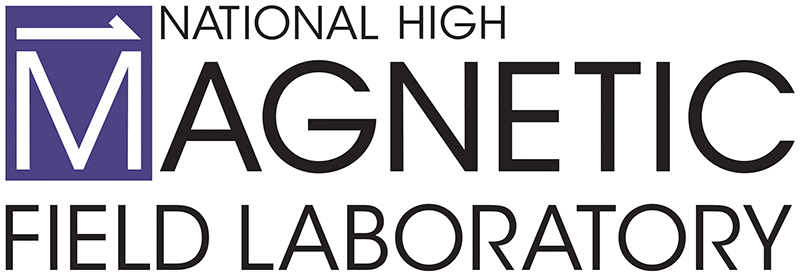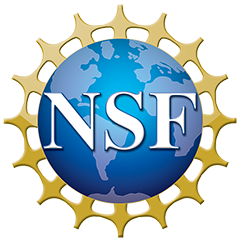Tag: Semiconductors
When a magnetic field is applied to a flowing current, it creates a weak but measurable voltage. This is the Hall effect.
John Bardeen was one of a handful of individuals awarded the Nobel Prize twice and the first scientist to win dual awards in physics.
Walter Houser Brattain discovered the photo-effect that occurs at the free surface of a semiconductor and was co-creator of the point-contact transistor, which paved the way for the more advanced types of transistors that eventually replaced vacuum tubes in almost all electronic devices in the latter half of the 20th century.
Esther Conwell was a physicist and chemist known for her pioneering semiconductor science. Her research investigating the fundamental properties of semiconductors and conducting polymers paved the way for modern computing and silicone microchips.
The integrated circuit fueled the rise of microelectronics in the latter half of the twentieth century and paved the way for the Information Age. An American engineer, Jack Kilby, invented the integrated circuit in 1958, shortly after he began working at Texas Instruments.
Siegmund Loewe was a German engineer and businessman that developed vacuum tube forerunners of the modern integrated circuit.
William Bradford Shockley was head of the solid-state physics team at Bell Labs that developed the first point-contact transistor, which he quickly followed up with the invention of the more advanced junction transistor.
At the dawn of the computer age, magnetic core memory helped make data storage possible, and showed surprising staying power in a field where components are constantly being replaced by new and improved products.
Topology, screws, spin and hedgehogs are words not normally found in the same scientific article but with the discovery of Weyl fermions in thin tellurine films they actually belong together. The work in this highlight describes how Qui et. al. used the unique properties of tellurine and high magnetic fields to identify the existence of Weyl fermions in a semiconductor. This discovery opens a new window into the intriguing world to topological materials.
Probing one of the prominent classes of atomically-thin materials, the transition metal dichalcogenides, researchers found that while dark excitons are not optically responsive, they do interact with bright excitons and as a result, affect the lifetime and coherence of the bright excitons. Understanding the interaction between dark and bright excitons is critical to the future use of these materials in quantum information technologies.
Since the observation of Hofstadter’s Butterfly in graphene, scientists have been working on a veritable zoo of materials which can be exfoliated down to single atomic layers and then stacked together (van der Waals stacking). This creates an additional lattice pattern (superlattice) by combining the lattice structures of the underlying materials and has produced some incredible physics. However, building a computer chip in this manner is not really feasible leading scientists to work on growing bulk materials with these properties. This highlight describes the results of one such material.
The physical properties of any solid material are determined by what happens in the quantum realm. How the electrons interact with each other, their surrounding lattice, any applied electric or magnetic fields, etc… will dictate properties such as hardness, ductility, strength or resistivity. The electrical properties of Mn3Si2Te6 can be altered by the application of strong magnetic fields causing the material to transition from an insulator to a metal. To understand the process behind this transformation, MagLab users employed infrared spectroscopy and high fields to illuminate the physical processes behind this behavior.
This research established experimental evidence for the long sought-after transition of a small, two-dimensional sheet of electrons to a solid state.
This is B=0 work in the new dry system in HBT Bay 1 as the magnet delivery was delayed until Nov 2023. The work demonstrates the ability to cool electrons to below 20 mK in a routine manner.
Analogous to the unique spectral fingerprint of any atom or molecule, researchers have measured the spectrum of optical excitations in monolayer tungsten diselenide (WSe2), which is a member of a new family of ultrathin semiconductors that are just one atomic layer thick.
Interactions between electrons underpin some of the most interesting – and useful -- effects in materials science and condensed-matter physics. This work demonstrates that, in the new family of so-called "monolayer semiconductors" that are only one atomic layer thick, electron-electron interactions can lead to the sudden and spontaneous formation of a magnetized state, analogous to the appearance of magnetism in conventional materials like iron.
An analogue of the quantum limit in metals, where very strong magnetic fields confine electrons to the lowest Landau level, has been discovered in the Kondo insulator YbB12. In an insulator, the Landau level filling is shown to take place in the reverse upon closing the gap with a magnetic field.
When two insulating oxides (e.g., SrTiO3 and LaAlO3) are brought together, their interface surprisingly becomes conductive. By studying these oxide interfaces in strong magnetic fields, we discovered unusual behavior in the way electrons move—suggesting a new type of electronic structure. These findings could help advance technologies like quantum computers and data-storage devices.
Move aside, electrons; it's time to make way for the trion.
Columbia researchers first to discover a quantum fluid—fractional quantum Hall states, one of the most delicate phases of matter—in a monolayer 2D semiconductor; finding could provide a unique test platform for future applications in quantum computing.
More Tags
- Biology
- Biochemistry
- Chemistry
- Cryogenics
- Dynamic nuclear polarization
- Energy research
- Engineering
- Environment
- Geochemistry
- Health research
- Life research
- Magnet technology
- Mass spectrometry
- Materials research
- NMR and MRI
- Physics
- Postdocs and grad students
- Quantum computing
- Science & Art
- Semiconductors
- STEM education
- Superconductivity
- Universe
- 100-tesla multi-shot magnet
- 32-tesla superconducting magnet
- 45-tesla hybrid magnet
- 900MHz magnet
- 36-tesla SCH
- 25-tesla split magnet
- 41-tesla resistive magnet
- 21-tesla ICR magnet
- 600 MHz 89 mm MAS DNP System


